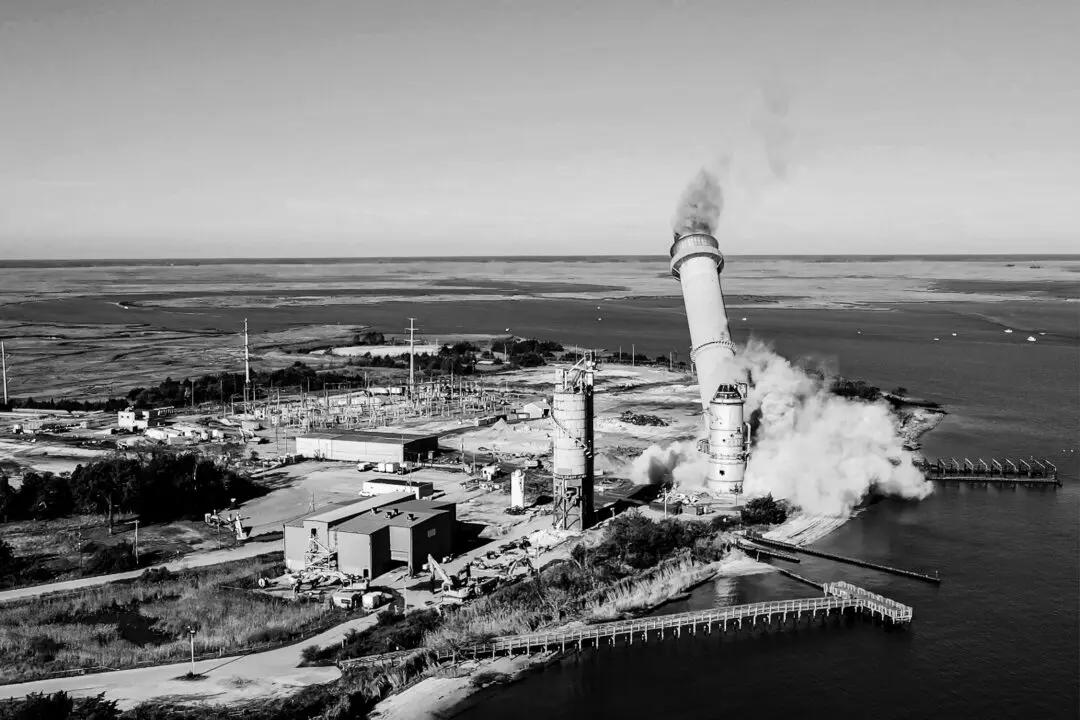RANCHESTER, Wyo.—A mine in Wyoming is drawing national attention to what is otherwise a high plains flyspeck with a single gas station, dollar store, and four bars along the Tongue River.
Tumbling out of the Bighorn Mountains, Brook Mine will be the first new coal mine to open in Wyoming in 50 years, as well as the first critical mineral and rare earth mine to open in the United States in more than 70 years. Miner Ramaco Resources is to produce at least 2 million tons of coal per year for electricity and extract more than 450 tons of elements annually.
“This one mine can break our reliance on China,” Ramaco Resources CEO and Chairman Randall Atkins said at a July 11 ceremonial ribbon-cutting for the mine about three miles away, at Ramaco’s offices and labs. The nearest town is Ranchester, Wyoming, which has 1,064 residents. It is less than 10 miles south of the Montana state line and about 180 miles east of Yellowstone National Park.
“Not every day do you get to see history being made, but that’s exactly what we’re doing here today,” he told the roughly 300 people gathered, recalling that a decade ago, the coal industry’s prognosis was grim.
“They said coal was dead and gone,“ Atkins said. ”Today, we’re breathing new life with a commodity America has an abundance of. This is just the beginning. If we can do it here in Wyoming, we can do it everywhere.”
The ribbon-cutting drew a high-profile retinue, including Energy Secretary Chris Wright; Wyoming Gov. Mark Gordon; Sens. John Barrasso (R-Wyo.) and Cynthia Lummis (R-Wyo.); Rep. Harriet Hageman (R-Wyo.); state lawmakers; and former Sen. Joe Manchin (I-W.Va.), who joined Ramaco’s board in April.
“The generations of coal miners who gave us the lives we have today, those same coal miners that are still delivering the world’s largest source of electricity, they’re going to give us, through mining of those same coal resources, these rare earth elements ... and they’re going to bring us back,” Wright said, calling for a “revolution” in domestic energy self-sufficiency, especially in processing critical minerals and rare earths.
“We need to mine them, process them, refine them in our country so we are self-sufficient and independent. We’re in a place today we cannot be. We need a revolution. And, therefore, we shall have a revolution.
“I hope we will all remember this day, the day when that pivot came and we drove towards that American strength and self-sufficiency.”

$500 Million Project
Ramaco Resources, based in Lexington, Kentucky, operates four metallurgical coal mines in West Virginia and Virginia. It purchased the 4,500-acre Brook Mine north of Sheridan, Wyoming, in 2011 for $2 million to produce coal for local electrical generation, Atkins said during a tour of Ramaco’s Ranchester plant.Opened in the 1880s, the mine had been shuttered for decades. At the time of Ramaco’s purchase, there were early indications of profitable concentrations of critical minerals and rare earths in the mine’s coal waste and in remaining seams, Atkins said.
Atkins said the company plans to extract 2 million tons of coal per year from Brook Mine, a relatively small amount of coal compared with that extracted from other Wyoming operators that produce 40 percent of the nation’s coal.
That 2 million tons of coal, once processed, will yield an estimated 1,242 tons of critical minerals and rare earths per year. According to the Fluor study, this would include 456 tons of the highly sought gallium, germanium, scandium, terbium, dysprosium, neodymium, and praseodymium.
Ramaco plans to build a plant to process the critical mineral oxides on site or on the 11,500 surrounding acres it owns to “bring magnet and semiconductor manufacturing in Wyoming,” Atkins said.
The company said the mine could meet up to 5 percent of the nation’s total demand for permanent magnets, including nearly one-third of the Pentagon’s needs.
Critical minerals and rare earths are crucial in the manufacturing of modern technologies, from electric vehicles to wind turbines to military electronic systems.
“Anything in your life that has a button—you start your car with a button, or your dishwasher, or your refrigerator, your washing machine, your F-35 fighter jet, all of those things—have rare earth elements,” Wright said.
Rare earths are 17 metallic elements that are not necessarily rare but that are dispersed in ores and minerals, making it difficult and expensive to extract and process them without the capacity to dig a lot of dirt and rock.
At least seven are present at Brook Mine: Dysprosium and neodymium are needed for high-performance magnets in electric vehicles, turbines, and iPhones; scandium is used in aluminum production; lanthanum is needed for car batteries; and yttrium and terbium have military applications, including in targeting devices.
More than 70 percent of those rare earths came from China, the U.S. Geological Survey said, noting that China controls roughly 85 percent of global production in processed elements for use in manufacturing.
Atkins said the project is several years away from full production, with limited mining beginning by year’s end.

Processing in the US
Brook Mine would be the nation’s only critical mineral and rare earth processing operation other than that in Mountain Pass, California.That could change, Wright said, but other than “a lot of talk,” there is not much action beyond “a project in Texas” and the American Rare Earths Halleck Creek proposal “about 100 miles” away in Wyoming.
“We need [processed rare earths] as fast as we can get it—that’s why I keep pushing,” he said.
Gordon said he is grateful that Wyoming can provide oil, gas, coal, and now rare earths, but he said the state has plenty of uranium to fuel the nation’s “nuclear renaissance.”
Allowing Russia and other nations to dominate the uranium market is a failure systemic in Democrats’ energy policies, he said.
“We have been asleep,” Gordon said. “But now we are awake. We cannot regulate our way into the future, but we can innovate our way into the future.”
Barrasso said it is no surprise that an Appalachian company has found a new home and common cause with “the cowboy culture” of northern Wyoming’s Bighorn Mountains.
“People here still believe the future is ours to shape and that is what we’re seeing here,” he said.
Hageman said: “Dependency is vulnerability. That changes today.”
According to her, the ribbon-cutting ceremony marks “not just the opening of a new mine,“ but also ”the dawn of a new era.”
Atkins said it has been an arduous 15-year journey to get to this “momentous day,” but that at least today, things are panning out.
“A good mine has to mature like whiskey,” he said. “Today, we pop that cork.”







